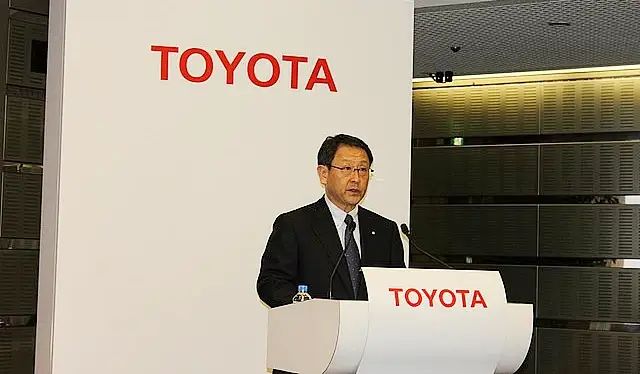Toyota is one of the world’s most successful and recognized automobile manufacturers, but its origins trace back to a very different industry—textile looms. The transformation from a loom-making company into a global automotive powerhouse is a testament to the vision and ingenuity of its founder, Kiichiro Toyoda. His determination to innovate, combined with an unwavering commitment to quality and efficiency, laid the foundation for Toyota’s rise to dominance.
The Birth of Toyota: From Looms to Cars
The story of Toyota begins with Sakichi Toyoda, an inventor who revolutionized the textile industry in Japan with his automatic looms. His company, Toyoda Automatic Loom Works, was at the forefront of innovation, developing looms that significantly improved productivity and efficiency. However, it was his son, Kiichiro Toyoda, who saw an opportunity beyond textiles—automobiles.
By the 1920s, Japan was relying heavily on imported vehicles from the United States and Europe. Kiichiro recognized the need for a domestic automobile industry to reduce dependence on foreign manufacturers. Inspired by a trip to the U.S., where he studied Ford’s production techniques, he became convinced that Japan could develop its own automotive industry. Using funds from the sale of his father’s loom patents to the British company Platt Brothers, Kiichiro established the automobile division of Toyoda Automatic Loom Works in 1933.
The Founding of Toyota Motor Corporation
In 1937, Kiichiro officially founded Toyota Motor Corporation, marking the company’s shift from textiles to automobiles. He dropped the “d” in “Toyoda” to create a more distinctive brand identity, and the new name also had a luckier connotation in Japanese writing.
Toyota’s early years were challenging, as Japan lacked the infrastructure and expertise to mass-produce vehicles. However, Kiichiro and his team were relentless in their pursuit of developing reliable and affordable cars. By 1936, Toyota had introduced its first passenger car, the Toyota AA, heavily influenced by American designs but adapted to local needs.
World War II and Post-War Recovery
During World War II, Toyota was forced to shift its focus to military vehicle production. The post-war period was equally difficult, with Japan’s economy in shambles and material shortages making it difficult to resume car manufacturing. However, Kiichiro’s vision for Toyota’s future never wavered. He championed the idea of lean manufacturing and just-in-time (JIT) production, which minimized waste and improved efficiency.
By the 1950s, Toyota was on the path to recovery, and in 1952, Kiichiro’s vision began to take shape when the company launched the Toyota Crown, its first export model. Unfortunately, Kiichiro did not live to see Toyota’s global success, as he passed away in 1952 at the age of 57. However, his legacy continued through the company’s dedication to innovation and quality.
The Rise of the Toyota Production System (TPS)
One of Toyota’s most significant contributions to the automotive world is the Toyota Production System (TPS), developed in the 1950s by Taiichi Ohno and Eiji Toyoda. This system introduced key principles such as:
- Kaizen (Continuous Improvement): A commitment to making small, incremental changes for efficiency and quality improvements.
- Just-in-Time (JIT) Manufacturing: Producing only what is needed, when it is needed, reducing waste and excess inventory.
- Jidoka (Automation with a Human Touch): Ensuring that machines and processes stop when defects are detected to maintain quality.
These principles revolutionized manufacturing, setting new global standards for efficiency, quality control, and cost-effectiveness. Today, TPS is studied and adopted by industries beyond automotive, including healthcare, technology, and aerospace.
Toyota’s Global Expansion and Innovation
By the 1960s and 70s, Toyota had firmly established itself in the global market, expanding to the United States and Europe. The introduction of the Toyota Corolla in 1966 marked a turning point, as it quickly became one of the best-selling cars worldwide. Toyota’s reputation for building fuel-efficient, reliable vehicles helped it thrive during the 1970s oil crisis, solidifying its place as an industry leader.
In the 1980s and 90s, Toyota continued to innovate, launching Lexus as its luxury brand and pioneering hybrid technology with the Toyota Prius in 1997, the world’s first mass-produced hybrid car. Today, Toyota remains a leader in electric and hydrogen fuel cell technology, pushing the boundaries of sustainable transportation.
Kiichiro Toyoda’s Lasting Legacy
Kiichiro Toyoda’s vision of creating a Japanese automobile industry transformed Toyota from a loom-making business into one of the most influential automakers in history. His commitment to quality, efficiency, and innovation shaped Toyota’s core values, enabling it to become a global leader. Today, Toyota continues to honor his legacy by embracing new technologies and driving the future of mobility, proving that adaptability and forward-thinking can turn a small idea into an industry giant.
